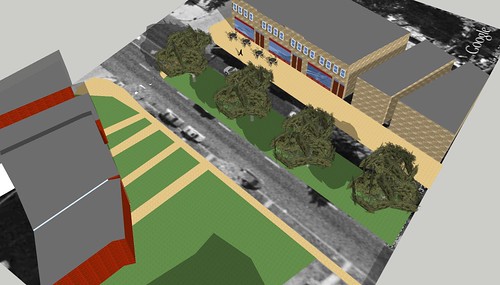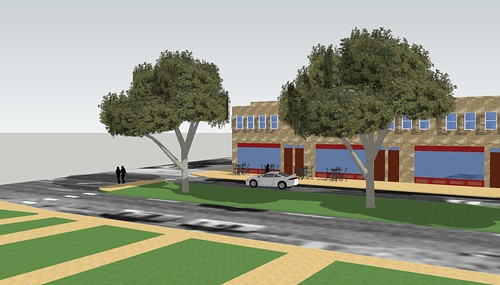Post-Proposition M in November 2008, Metro's service reductions would litter streetscapes everywhere with plastic bags placed over bus stops that, we now all know too well, read: "
We Regret Due to Lack of Funding Service to this Stop has been Suspended".
Sadly, St. Louis's most exciting business district--
Cherokee Street--was among those areas without transit service.
Vanishing St. Louis observed at the time that "Downtown St. Louis [would] be without street level transit for the first time since before the Civil War". Likewise, Cherokee Street, the South Side's downtown, would lose its historic transit service as well,
present since the 1890s in the form of an electric streetcar and later, of course, as a bus.
Today, the
#73 Carondelet bus serves the eastern portion of Cherokee, between Lemp and Jefferson, which is known as Antique Row. Yet Cherokee between Jefferson and Grand is without service.
This is unacceptable. All great cities, and by extension all great streets, should offer the opportunity to live without a vehicle. Living on or around Cherokee Street west of Jefferson is now made more difficult without direct transit service. Even a relatively short walk to the nearest bus stop can make a commute a headache. Living in the heart of the Cherokee District, say at Nebraska Avenue, one would have to walk six blocks to the Jefferson bus (#11 Chippewa), more than seven blocks to the Gravois bus (#10 Gravois-Lindell); nine blocks to the Grand bus (#70 Grand); and four elongated blocks to the Arsenal bus (#30 Soulard). This is not an impossible journey in any of these directions; just frustrating and inconvenient. We must press for a
United Cherokee!
Plus, currently, Cherokee Street and Grand South Grand seem miles and eons apart. Mostly this is due to the fact that Gravois is such a wide street with high-speed traffic. Transit has a way of healing unforgiving urban environments. If I lived in Old North St. Louis, for example, I'd likely never choose to walk the roughly one and half mile distance between Crown Candy and downtown--I'd take the bus. Without this bus service, Old North would feel like a distant planet from relatively nearby downtown--and a much less attractive place to live. Luckily, though, the #30 Soulard can get me to City Hall (to apply for a building permit to renovate my row house?) in less than 10 minutes.
The #73 Carondelet should therefore cross Gravois and connect with the city's best used bus line--the #70 Grand. At that point, it would not be a stretch for St. Louis University students (and other people who live along the long and populous Grand Boulevard) to take the #70 to the "Cherokee bus" and explore the city's most bustling commercial district.
People living in Benton Park along the #73 could then use just one bus line to get to a grocery store (the South Grand Schnucks, where an influx of shoppers might finally force the management to substantially refurbish that location. That's enough of an incentive, huh?).
The current route of the #73 Carondelet. Can you even spot the pitifully short leg on Cherokee Street?
Now, would I love this bus to become a streetcar? Of course. But let's get the transit service restored first and see what else we can do later. Who's with me?
Let's make sure Metro takes its funds from the Prop A victory and reestablishes a bus line down Cherokee in its 2010 Restoration plan!
Please do any and all of the following if you support a
United Cherokee, from Lemp to Grand!
Email Metro officials:
restoration2010@metrostlouis.org (thanks,
Paul!)
Comment on
Next Stop, Metro's transit blog, indicating your support for a
United Cherokee.
Contact the two alderman who could have sway over such decisions: 9th Ward Alderman Ken Ortmann and 20th Ward Alderman Craig Schmid:
Ken Ortmann
(314) 622-3287
(314) 776-0161 Additional Phone
Email here.
Craig Schmid
(314) 622-3287
Email here.
Tweet Metro or its orderlies (note: term of endearment) with your support!
Official Twitter feed for Metro:
http://twitter.com/STLMetro
Twitter feed for Courtney Sloger, Next Stop blogger and Metro Social Media Maven:
http://twitter.com/STLTransit
Facebook Metro and leave a wall post indicating your support for a
United Cherokee.
Link to official Facebook page.
Thanks, all, and thanks to
Cherokee Street News for giving me this idea!






















